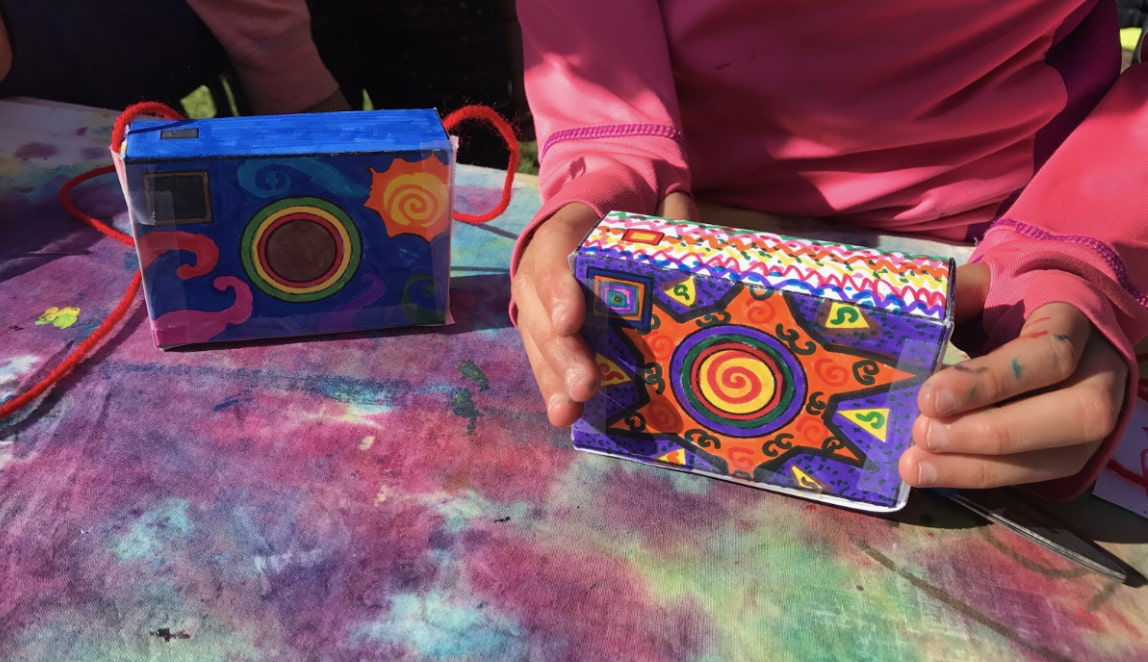

Artist Mash-up: Camera Sculptures
Recommended for ages 5+
Estimated time: 30 minutes
Check out Libby Black’s paper sculptures and Dorothea Lange’s photography, and design your own camera sculpture.
Dorothea Lange was an American photographer who documented major events that happened during her lifetime. Explore her photography using OMCA’s Online Collection and Picture This website. Dorothea Lange used her photographs to tell stories about what she felt mattered. What kind of things are you seeing right now? What story would you tell?
Libby Black is a Bay Area artist who re-creates everyday objects in order to capture a specific moment in time. She uses paper, glue, and paint to create sculptures of things like chairs, flowers, and even a golf bag (which you might have seen in the OMCA Gallery of Art!).
Inspired by both artists, we’re challenging you to think creatively about what you might use at home to make a camera sculpture that captures this moment in time. You can use an empty small box, toilet paper tubes, or even the template we’ve provided.
Think about…
- What do you want people to know about this moment?
- How can you tell a story with a picture, colors, and/or symbols?
- What paper materials could you use at home to make a sculpture?
Make your own Camera Sculpture
Materials
- Materials to build your camera – paper, cardboard, a small empty box, or this camera template
- Scissors
- Tape or glue
- Things to draw with – markers work well on cardboard, and crayons work too
Optional
- String or yarn
- Toilet paper tube

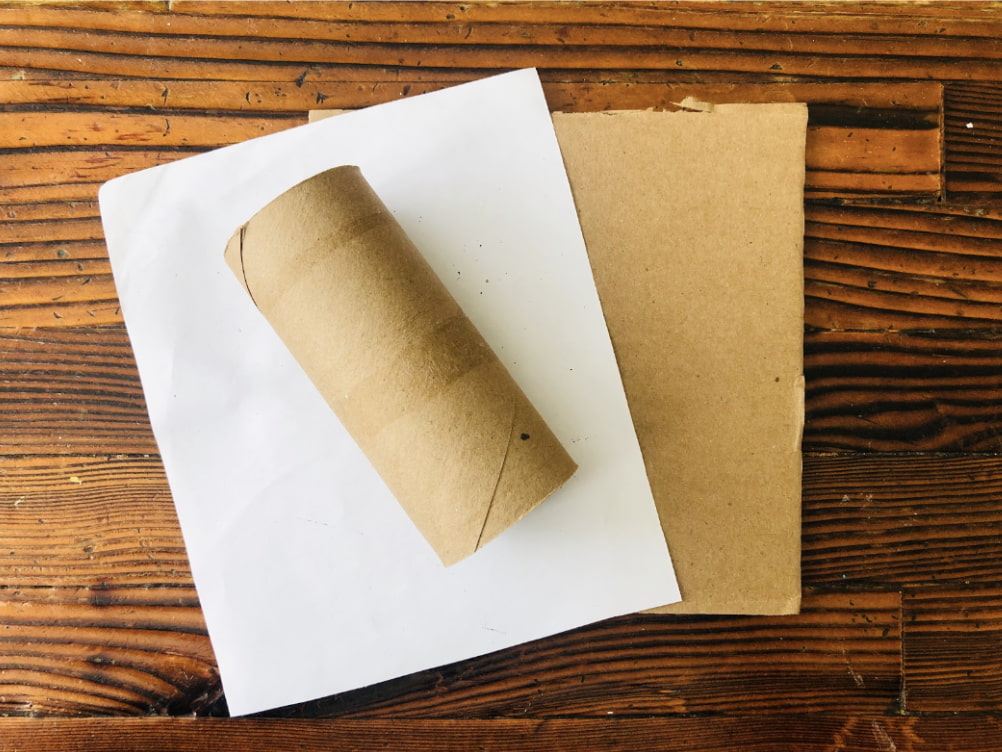
Steps
1. Build the camera body using your found materials, scissors, and glue or tape. You might try:
- An empty small box (a bandaid box works great)
- Tape or glue together cardboard
- Draw one on paper, or use the template
If your box already has something on it (like our bandaid box), wrap it with paper.
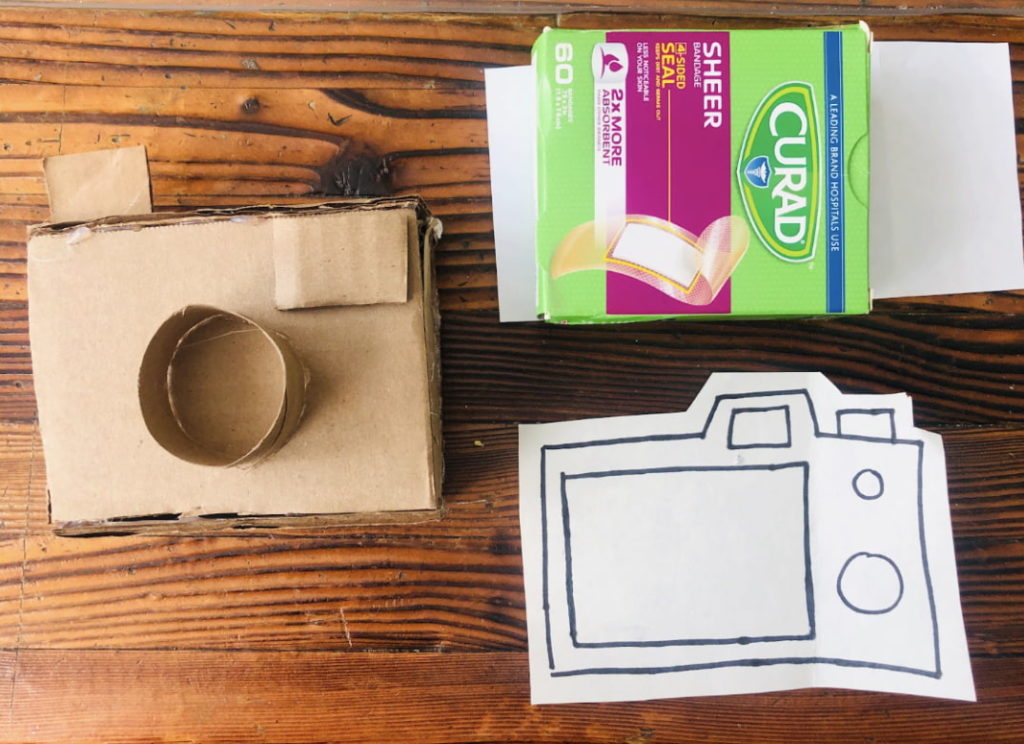
2. Draw a rectangle or cut a piece of paper to fit on the back of your camera. This is your viewfinder. A viewfinder is what a photographer uses to create and crop an image.
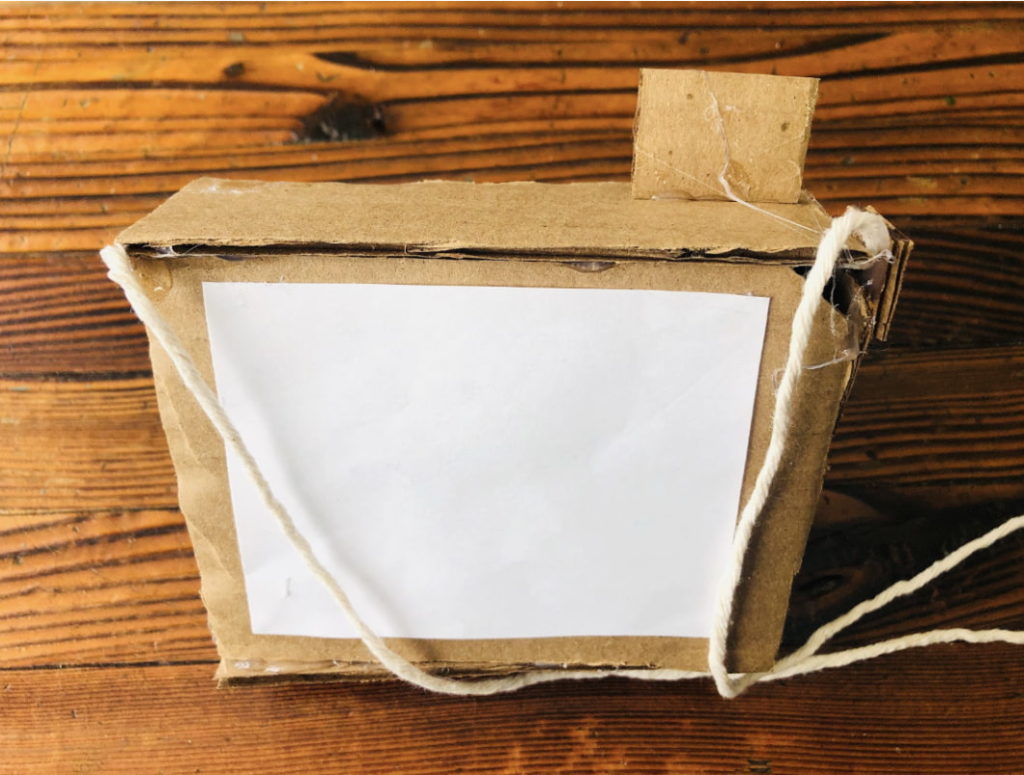
3. What story do you want to tell about this moment in time? Draw a picture of a person, place, or thing you want to tell a story about. This will be your camera’s viewfinder.
Why is it important?

4. Add a lens and flash to the front of your camera. Tip: Toilet paper tubes work great as a lens, or you could draw your own.
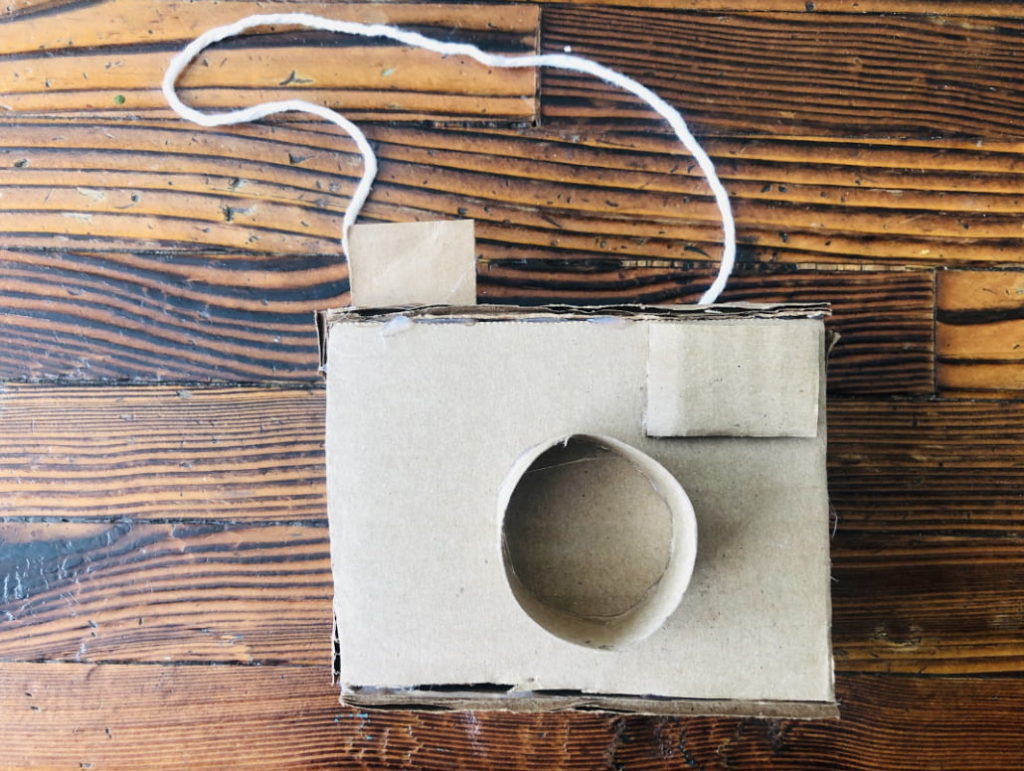
5. Decorate your camera with art supplies you have at home!
Add a string to the top and wear it around your neck.
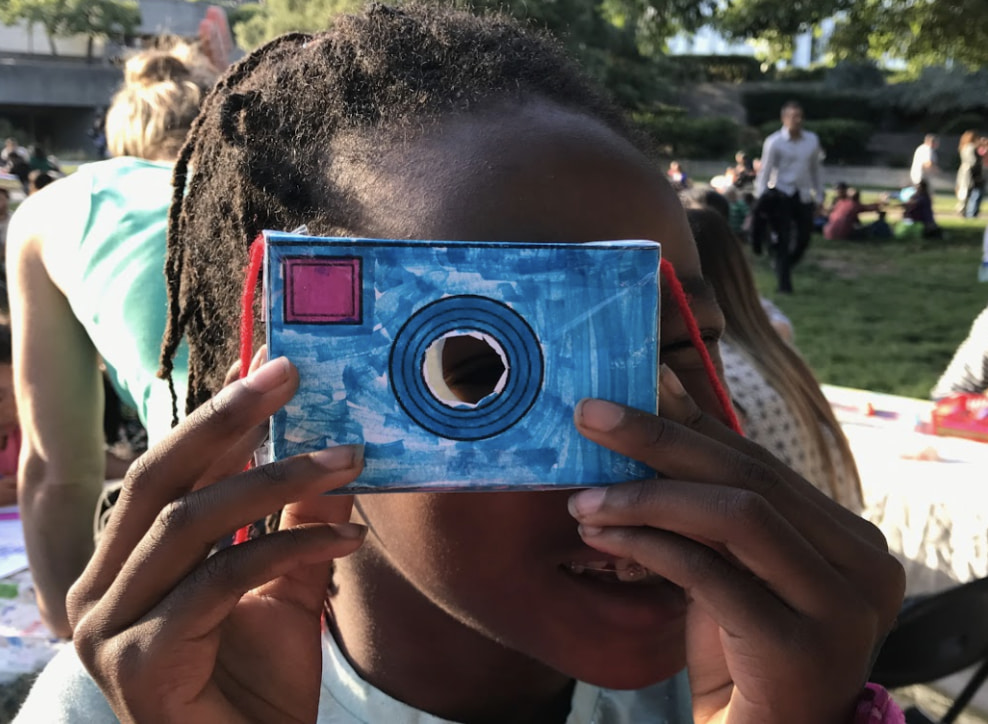
Take a photo of your camera, then share it with us using #OMCA. Tell us what’s in your viewfinder!